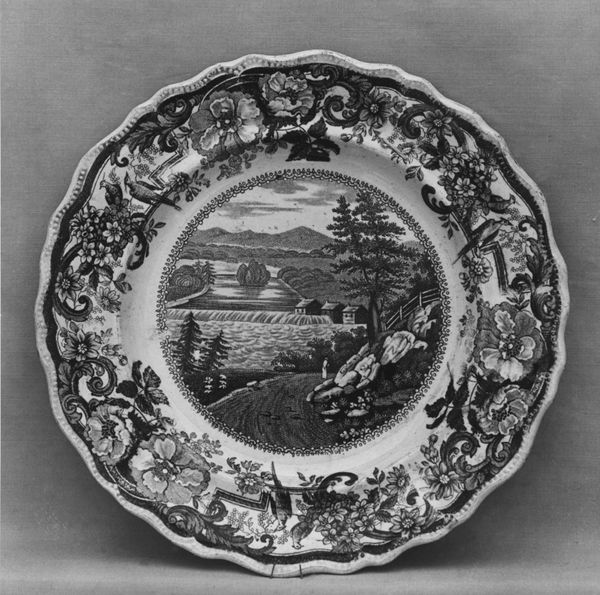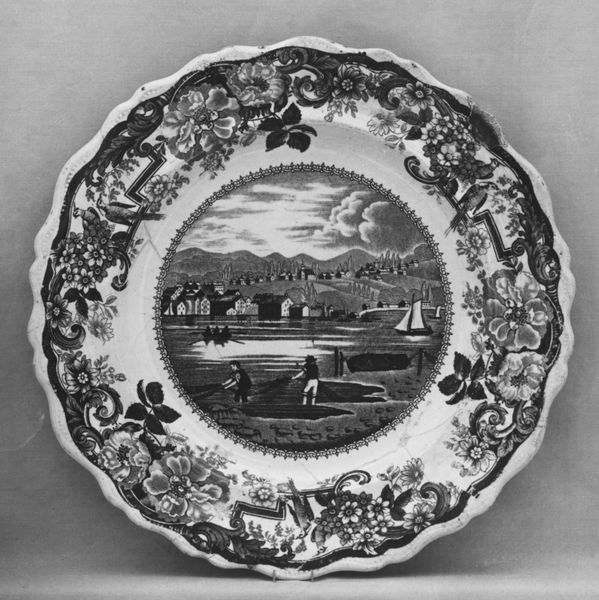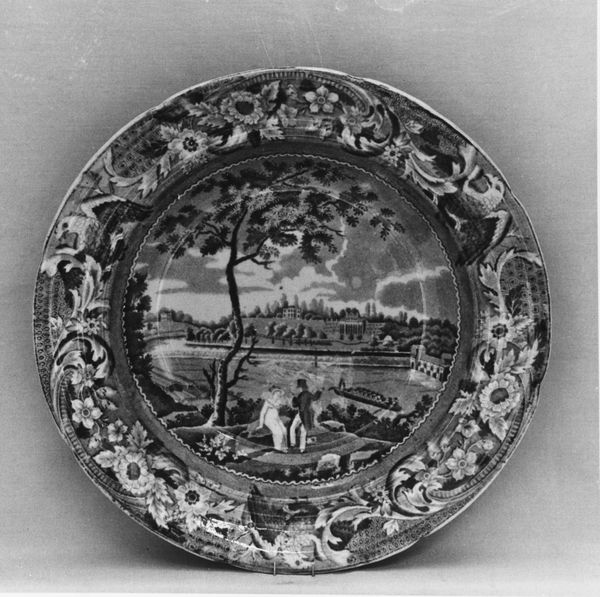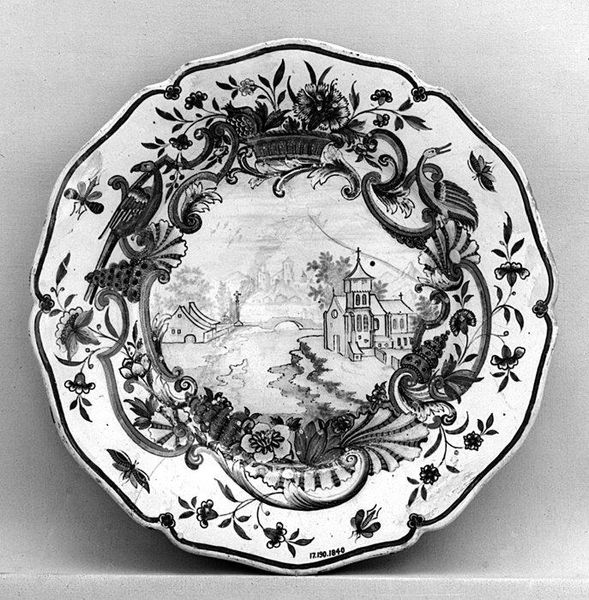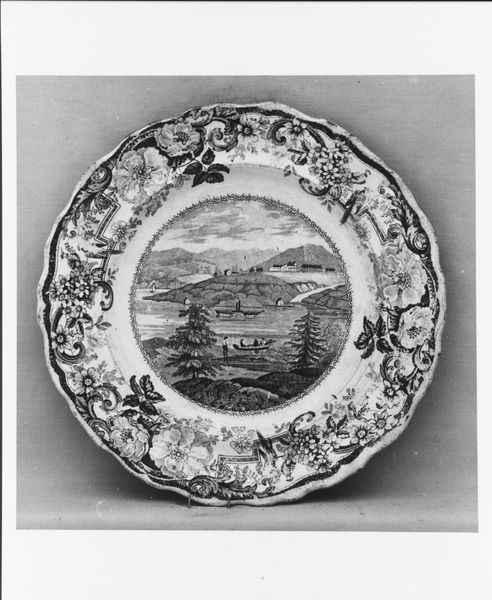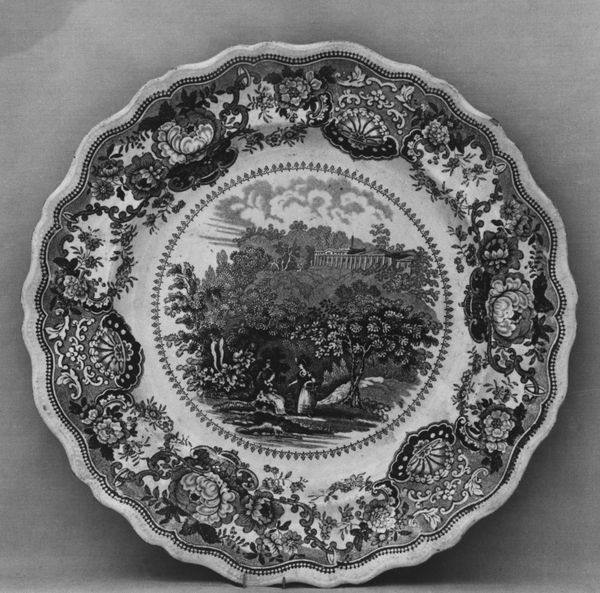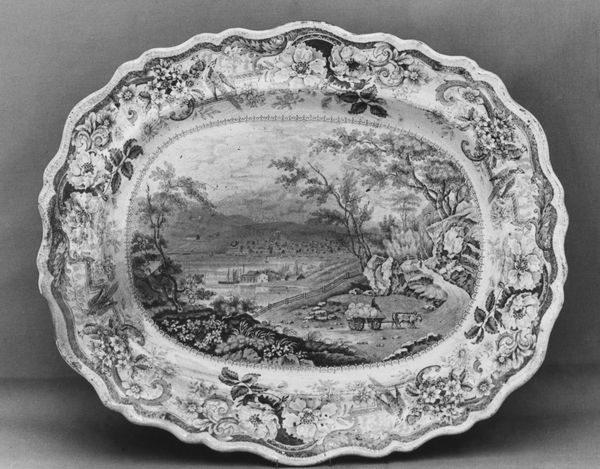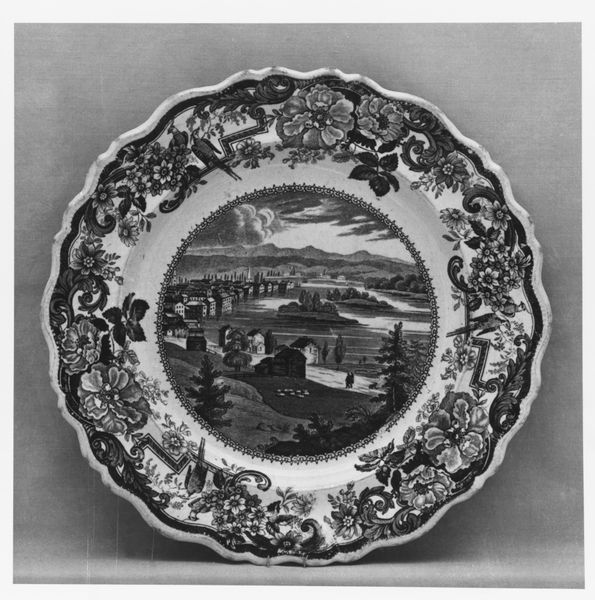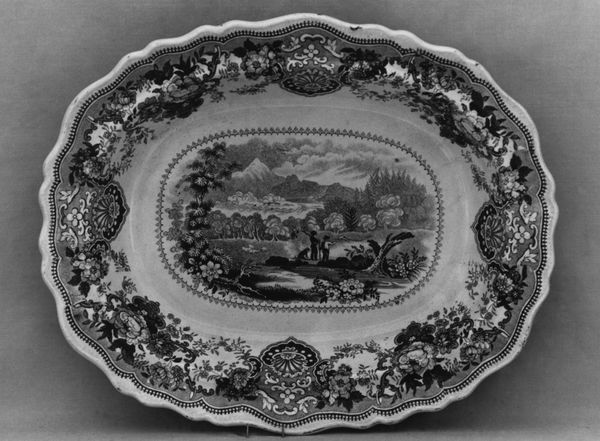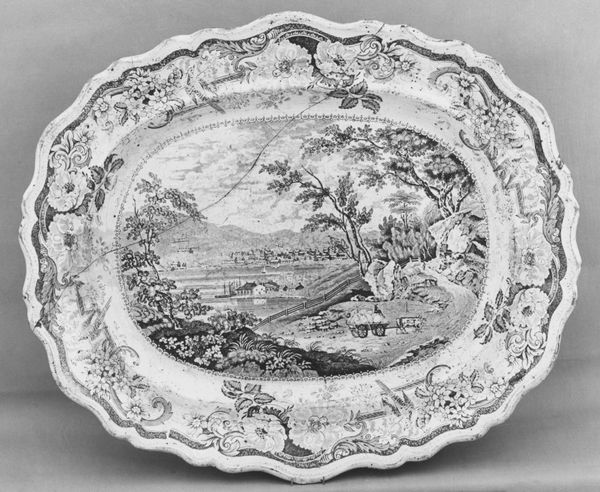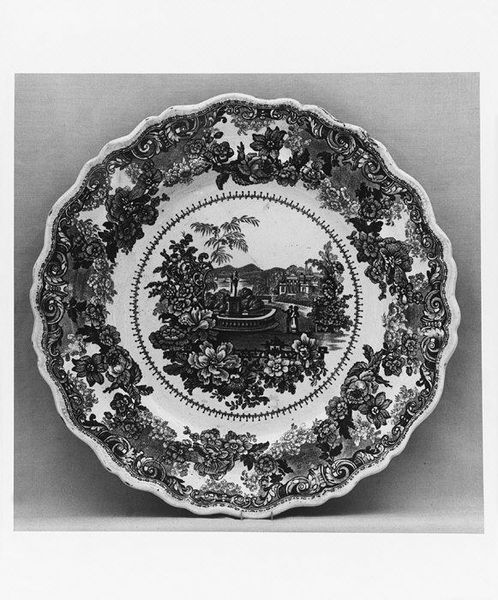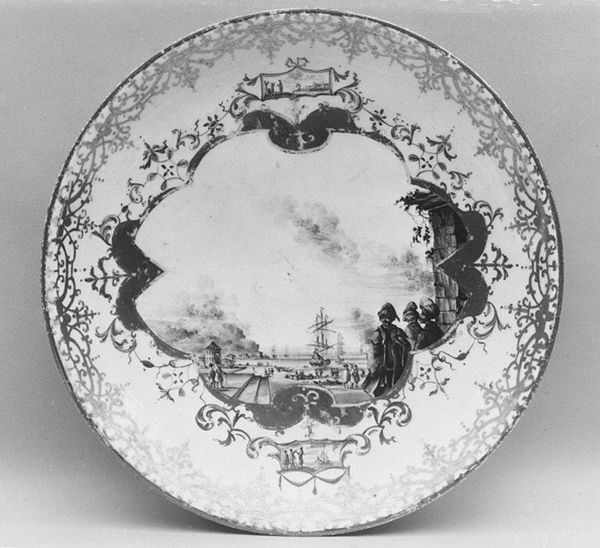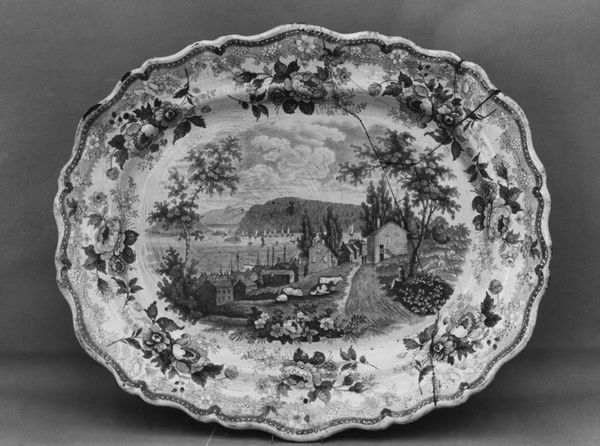
print, ceramic, earthenware
# print
#
sculpture
#
landscape
#
ceramic
#
bird
#
earthenware
#
stoneware
#
geometric
#
decorative-art
Dimensions: Diam. 8 7/8 in. (22.5 cm)
Copyright: Public Domain
This plate was made by James and Ralph Clews, sometime in the early 19th century, out of earthenware. Earthenware, of course, is one of the most common materials on earth, literally. To make this plate, the clay would have been mixed with water to form a workable slip, shaped on a turning wheel, and fired at a relatively low temperature to harden it. Then, the scenic decoration would have been added: probably using a transfer-printing technique, where an image is engraved onto a copper plate, then transferred to the ceramic surface. The plate was likely one element in a large production run. The resulting black-and-white design, permanently fused onto the plate, mimics the look of a hand-painted scene, but it’s important to note that this object is tied to wider social issues of labor, politics, and consumption, and the industrialized means of production, which is important to understanding its full meaning. This plate prompts us to reconsider distinctions between fine art and craft.
Comments
No comments
Be the first to comment and join the conversation on the ultimate creative platform.
